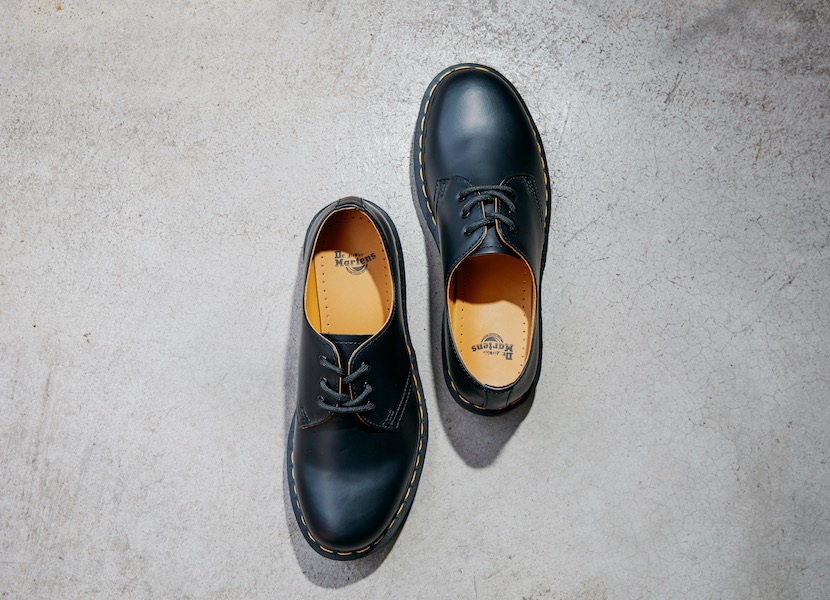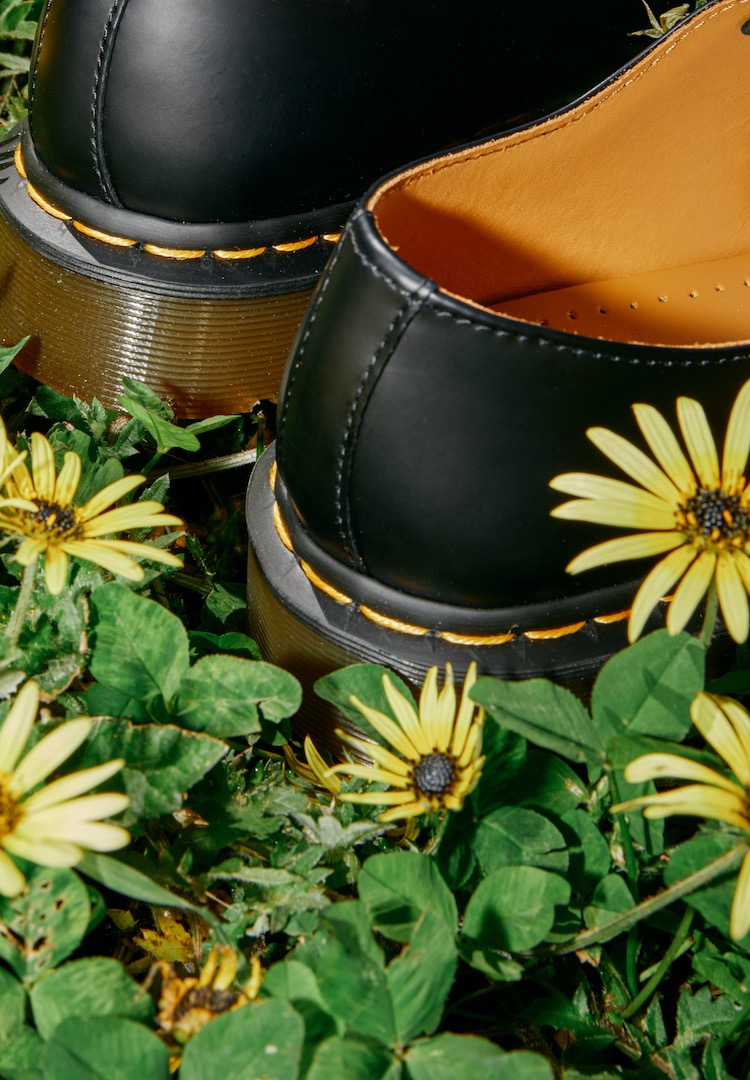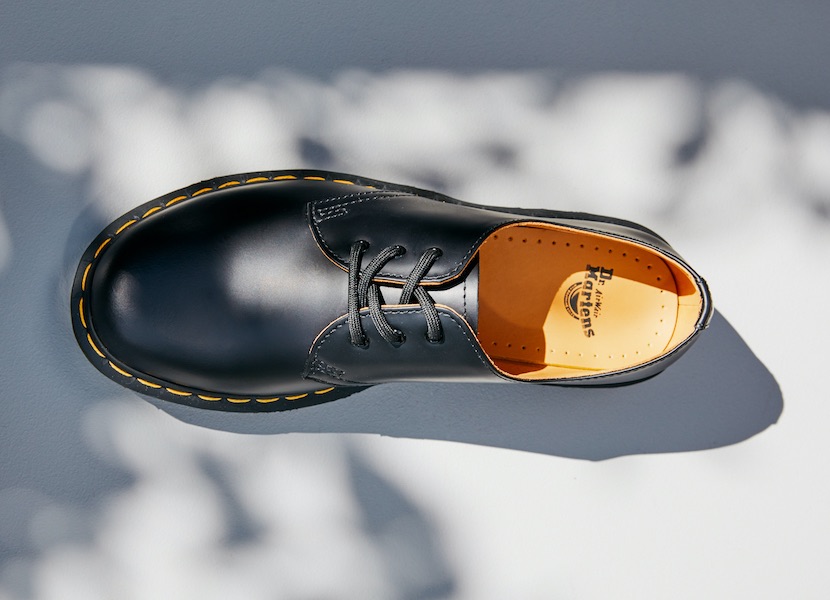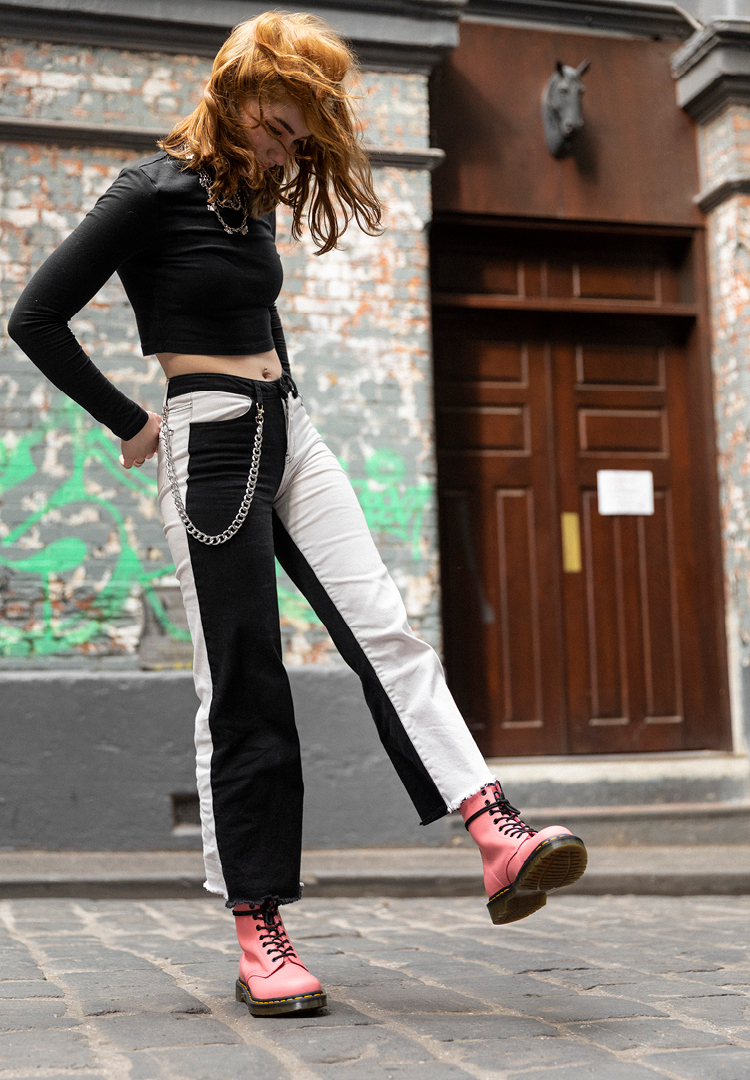Is Dr. Martens the ABBA of fashion?
PHOTOGRAPHER – SAM WONG
STYLIST – NAT TURNBULL
WORDS BY ELIZA SHOLLY
A very convincing case.
I can still remember the first time I heard ABBA Gold. My parents had an old record player in ‘the good room’ with two accompanying vinyls. The Miseducation of Lauryn Hill (banger) and ABBA Gold. They used to play Knowing Me Knowing You before they went to the RSL for dinner, leaving us with the babysitter right as it transitioned into Take A Chance On Me. They later went as ABBA in full costume for a 40th a few years later, but that’s a story for another night.
I also remember the first time I knowingly cottoned on to Dr. Martens. A teacher in high school, that I may or may not have a crush on, wore a pair of vintage 1461s on the regular. Call me a late bloomer, but from the moment I saw the yellow stitching, it was all over.
I know what you’re thinking. What do these two stories have to do with each other? Why am I reading the musings of a musically- and sexually-confused adolescent when I could be doing literally anything else? Well, I am here to tell you one of my most potentially groundbreaking ideas that will shake you to your core. Dr. Martens is the ABBA of fashion.
I beg you to hear me out.
The unlikely UK/European identity
Let me begin this train of thought by taking you on a journey through time.
The history of Docs begins in Northamptonshire, England. The brand began as ‘Griggs’ in 1901, establishing itself at the centre of British work boots. In 1945, 25-year-old soldier Dr. Klaus Maertens was convalescing in post-war Munich. While nursing a broken foot, he created an air-cushioned sole for his boots as an antidote to the traditional hard leather. Over the next decade, he sold his unique design to middle-aged Karens, placing ads in footwear magazines. Word got back to England. Griggs took note and acquired the license in the late ’50s. The result was a collaboration between Griggs and Maerten, releasing the 1460 style shortly thereafter under the Dr. Martens moniker.
The boot has been the flagship style ever since, with its iconic details – eight eyelet design, braided heel loop, yellow stitching – having never changed.
The ABBA story begins not too far from Maerten’s Munich in Stockholm, Sweden. In June of 1966, Björn Ulvaeus met Benny Andersson for the first time. The pair’s artistic prowess was obvious from the get-go, eventuating in a two-piece that achieved minor success. Three years later, Björn and Benny met the two women who would not only become their wives, but also the other half of ABBA, Anni-Frid Lyngstad and Agnetha Fältskog.
The group entered various singing competitions in Stockholm and surrounds, garnering various levels of buzz with each attempt. In 1974, the group entered Melodifestivalen – the Swedish selection for the Eurovision Song Contest – with the song Waterloo. The Eurovision Song Contest on April 6, 1974 turned out to be the most famous moment in ABBA history, when the group won the international juries over with ‘Waterloo’ in Brighton, England.
You may call it a coincidence that these two cultural phenomena were both born from a hybrid of European sojourns. Or perhaps, their stories are more intertwined than even we mere mortals could have predicted.
The reputation bell curve
Dr. Martens has always been a symbol of the working class. Even when the brand is worn by rock stars or featured on runways, the iconography has remained the same. It is a shoe of the people, for the people. Grunge and punk sub-cultures have attempted to divert them from the mainstream, but the enduring appeal of a Doc has always centred on the same thing: its ability to rise above trends and exclusivity. Somehow, in a world so fascinated with an ever-evolving capitalist cycle, the shoe has managed to uphold a social standing and remain popular despite having no ‘obvious’ demographic.
Never has a simple piece of footwear felt equally as comfortable on the feet of a 17-year-old VSCO girl as a 56-year-old band bro with a penchant for Joy Division. Both can cross each other in the street with mutual respect, intangibly executing the subtle head-nod that comes when you both co-exist with a shared passion and respect. Such distinct demographics may bond over very little, but that simple yellow stitching unifies us in a way that is unspoken.

Even in a country like Australia, where tall poppy syndrome runs rife directed at anything considered beloved by the mainstream, the 1461 shoe still has an intangible cool factor. It also leaps across generations, not unlike a humble Swedish band that everyone seems to like…
Press play on an ABBA song at a wedding and the dancefloor will deliver a smorgasbord of age brackets. Be it the chorus of ‘Dancing Queen’ or the opening piano riff of ‘Mamma Mia’, rarely have lyrics been able to transcend both space and time. Who can say they haven’t had a great night sashaying to the likes of ‘Fernando’ or ‘Thank You For The Music’ – many times with a member of a different generation? Like Dr. Martens, an ABBA song is just as comfy at kick-ons as at a black-tie event. The dulcet tones rarely feel out of place, always welcome no matter the environment. You just need to pick the right song.
The sustainability conundrum
More than three decades after ABBA’s “temporary break”, there has still been no reunion. And while rumours of feuds have permeated headlines, the group’s public legacy has continued to soar in Western media.
The 1990s saw the beginning of a major revival, with successful cover versions and high-profile movies (Muriel’s Wedding, Priscilla, Mamma Mia) using ABBA songs to lure new and nostalgic audiences. Compilation CD ABBA Gold was released in 1992 and has sold more than 31 million copies to date. To put that into perspective, The Beatles’ famous Abbey Road – released over 20 years earlier – has sold less. Although there is no metric for an album being ‘sustainable’, perhaps ABBA Gold may be the first to make a case.
There are larger discussions to be had about the need for environmental awareness in music. Merchandise, touring, festival and events all plague by way of emissions and excess. However, when discussing the purchase of music in a physical form, I iterate that ABBA Gold could potentially be the most sustainable album of all time. You buy one copy on CD/vinyl/tape and you’re set. No need to consume any more music for the rest of your life. Hyperbolic? Maybe. Revolutionary? Also maybe.
On the other hand, it’s not hard to wax lyrical about the sustainability of Dr. Martens. The brand has a lifetime warranty collection and uses packaging from 100% post-consumer waste materials. If you’ve ever owned a pair, you’ll know they are grounded in high-quality craftsmanship and durability – once you wear them in, of course. They also have a popular vegan range tried, tested and ticked by my plant-based housemate. As far as environmentally-conscious footwear goes, they are pretty up there.
To conclude
I’ve always fantasised about being on Desert Island Discs. When I’m trying to fall asleep at night, I imagine what recordings I’d relay to Lauren Laverne as a Castaway. It’s oscillated throughout the years, bar the inclusion of ABBA Gold. I guess the point of telling you this (aside to flex my love of niche BBC radio programs) is to affirm that comparing ABBA to anything is huge for me.
The same can be said about Dr. Martens’ 1461 shoe. For the fashion-inclined, shoe has gone from strength to strength, cementing itself as a style identity rather than a piece of footwear. Regardless of what subculture (or musical genre) is pioneering the latest trend, both Dr Martens and ABBA will remain ready and waiting at the forefront.
Dr. Martens 1461 is now available in-store and online at Hype DC, along with a series of other premium footwear options. Purchase your own pair of 1461s here or browse everything else Hype DC has to offer here.














